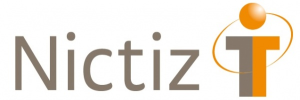No more patients left at the gate
Value-Based healthcare (VBHC) is gaining momentum in Dutch healthcare. And it’s a good thing. No other model focuses on the added value of patient healthcare like VBHC. And that, after all, is our goal. The model ensures collaboration. And that is certainly needed in a complex healthcare system in which everyone is interconnected, directly or indirectly. Because no one can improve healthcare on his own.
More and more inspiring examples of initiatives have been developed based on the VBHC model. Just look at the twelve nominees for the VBHC Prize 2018. Frontrunner Santeon hospitals is a prime example to be followed closely. They have developed a method for treatment teams from the seven hospitals to structurally learn, improve and implement areas for improvement together. And that is the strength of the model. It provides opportunities for every institution to develop a method and apply it within its own operations. The principles of VBHC work well and (fortunately) are often applied intuitively. One example is the Acuut Zorgportaal [Acute Care Portal], which was developed by Nictiz, centre of expertise for eHealth, in collaboration with SpoedZorgNet, NVZ (Dutch Hospital Association) and Finalist.
“The principles of VBHC work well and (fortunately) are often applied intuitively.”
Disaster scenario
The Turkish Airlines crash near Schiphol was the impetus. A disaster with 9 dead, 86 injured and 750 emergency service staff. The service was exemplary but greatly hampered due to a lack of information. The locations of the patients and their condition were unclear. Some hospitals received many patients while others that were well-prepared for large-scale assistance only received a few. Care providers had no insight into hospital capacity and family members had to endure a long period of uncertainty. A solution was needed: the Acuut Zorgportaal (AZP). First of all for disaster situations, but also for everyday practice. Even nowadays ambulances with emergency patients are still left waiting at the gate at times.
VBHC approach
It is a world-class case that came about with a small team. In developing the Acuut Zorgportaal, they took patient value as the starting point. The patient needs to go to the right hospital for diagnosis and treatment as quickly as possible. This improves the survival rate and quality of life. The right place is the closest hospital where the care needed by the patient at that time is available upon arrival. And thus, it is not just about bringing a patient to a hospital as quickly as possible. Compare it with the service from Coolblue. It is not just about delivering the product to the door but providing service beyond the door.
“It is not just about delivering the product to the door but providing service beyond the door.”
Value-driven care is of prime importance in devising the appropriate chain solution. With a small team, it is about devising ways to improve care. The Acuut Zorgportaal began from a single location: Amsterdam. This was followed by a roll-out to other trauma regions such as North Holland, Flevoland, Utrecht and South Holland. prompt treatment of an emergency patient in the right hospital is only possible when care providers in the acute care chain work together for maximum impact. Proper agreements, mutual trust and transparent information are teh key. ‘Value-Based Health Care supports health management, clinical management and health dicision making.’ That is precisely what the Acuut Zorgportaal aims to do.
“Value-Based Health Care supports health management, clinical management and health decision making.”
Value-driven care
The Acuut Zorgportaal proves that the principles of VBHC work: collaborating in a small team, giving priority to value for the patient, starting locally and realising a useful information overview. In this way, with high-quality digital information at a glance, it succeeds in bringing patients to the right place and for the right treatment. The process of leaving the hospital as a patient is still a situation in reverse. Phone calls, faxes, post-its, letters on paper and memos are no exception in transferring patients from a hospital to a rehabilitation centre, nursing home or home care. Wouldn’t it be nice if patients could leave the hospital as easily as they entered it? Not because we want to digitize, not because Nictiz wants this, but because it contributes to value-driven care for patients. After all, that’s what it’s all about.
| Acuut Zorgportaal Using the web application, Acuut Zorgportaal care providers in an ambulance can see at a glance which hospital can accommodate a patient. It provides a current capacity overview in hospitals for emergency care, heart disease emergencies, CT thrombolysis, shock rooms and operating rooms. It also provides an overview of available delivery rooms and intensive care units in the Netherlands, such as the ventilated, non-ventilated and paediatric ICUs. What is unique about the Acuut Zorgportaal is that it connects different care providers from different acute care organisations. More than 40 different organisations, such as hospitals, control centres and ambulance services, already make daily use of the acute care capacity. |

